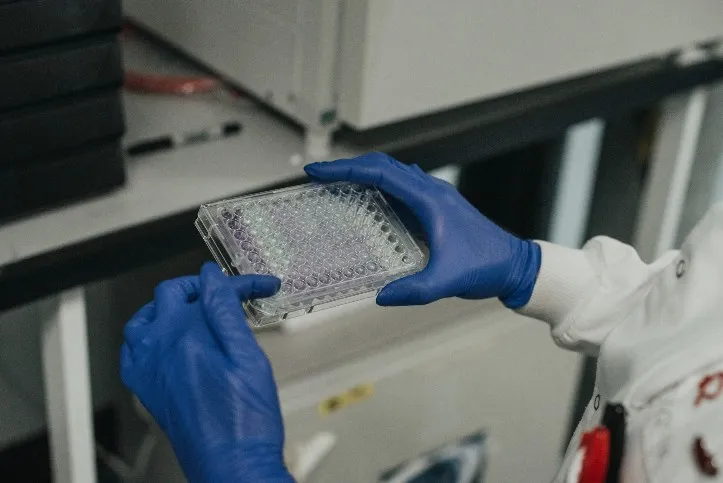
In this series, we’re bringing the exciting research that we’re funding from the Lab to Life. We chatted to Dr Daniela Nasteska, a Diabetes UK RD Lawrence Fellow at the University of Oxford. She started by telling us about her motivations for pursuing diabetes research.

"I started my career as a medical doctor, then completed a PhD in diabetes at Kyoto University. My PhD in Japan taught me to keep your mind empty of expectations when you do experiments and let the results guide you. And to always remember the big picture - that you’re doing research for the people that matter to you, like your friends, or your community.
"I personally have a strong connection to diabetes because my father and other relatives have lived with type 2."
Dr Nasteska also shared what our funding meant to her:
"I was at the seaside in Japan, and it was in the middle of the night when I got the email saying I had been awarded Diabetes UK’s RD Lawrence Fellowship.
"I felt immense gratitude and happiness. This fellowship is a career-transforming experience. Because Diabetes UK believed in me – and keeps on believing in me – I’ve been growing as a researcher every day."
The protein recycling centres inside our cells
Our cells keep healthy by making and removing proteins.
Dr Nasteska explained:
"Cells need to make proteins and clear them out. My key focus is on understanding protein synthesis – the process by which proteins are made – in beta cells. This process is the core mechanism that keeps cells alive and healthy."
But in type 2 diabetes, something goes wrong with the protein-making process inside insulin-making beta cells. It’s thought that this may cause beta cells to produce less insulin.
With our funding, Dr Nasteska is using powerful microscopes to learn more about the protein cycle in beta cells from mice of different ages or sexes.
She’s also seeing how conditions of high blood sugar levels, which mimic type 2 diabetes, affect the protein cycle.
"Different beta cells make proteins at different rates. The resolution of microscopes that we use these days to see single proteins inside individual beta cells is astounding, helping us learn about their protein cycles in depth.
"But it would be amazing if there was a highly-specialised microscope that could scan all the cells at once and tell me immediately which ones are making more proteins than others. That would make my life easier than having to monitor each individual cell!"
We heard how Dr Nasteska monitors protein turnover in beta cells:
"For my current project, I’m measuring a special fluorescent protein called Kaede in clusters of beta cells and monitoring how it changes from fluorescent green to red under the microscope. The green colour marks newly-made proteins, whilst the red shows protein clearance from the cells. This enables me to monitor protein turnover in real time in beta cells - over several days."
Understanding protein processes to treat type 2
Dr Nasteska told us:
"When people are diagnosed with type 2 diabetes, doctors have several lines of treatment that they may choose. But we often apply the one-size-fits all approach, even though people with type 2 diabetes are such a diverse category.
"This means that many drugs that we assume might work for people prove to be less effective a year or more into the treatment."
Dr Nasteska thinks that understanding more about how proteins are made in beta cells could help with the development of a range of personalised type 2 treatments that can alter protein synthesis and support better insulin production and release from beta cells.
"Imagine a future world where you can tailor treatments to each person with type 2 diabetes. To contribute to that future, we need to know how fast the proteins are being made in beta cells, how fast they’re being cleared, whether there are differences in how some beta cells regulate this process, if age plays a role - and how all these things affect insulin production."
Dr Nasteska is also studying how routine type 2 diabetes drugs interact with the protein cycle in beta cells.
"Say you have a panel of drugs for treating type 2 diabetes. When examining their effectiveness, we want to know: what impact does each drug have on the protein-making process in beta cells? Is it better to use certain drugs in young people with type 2 rather than older people? It’s about building a puzzle, so you can choose the right treatment for each person."
Tackling protein-making problems
Type 1 diabetes is caused by an immune attack on beta cells in the pancreas. Beta cell therapies involve making new cells in the lab to transplant into someone with type 1, allowing them to make their own insulin again. But lab-made beta cells currently don’t work as well as real beta cells.
Dr Nasteska thinks that protein-making problems inside lab-made beta cells could be the reason they don’t work as well as we need them to. Her research could shed light on how to overcome these problems so we can make better-working beta cells in the lab for beta cell therapies.
Stories, sci-fi and steps
We asked Dr Nasteska about how she spends her free time.
"I enjoy attending talks and events in Oxford’s vibrant academic community, especially at my college, Wolfson. I love yoga, watching period dramas, and reading novels - particularly sci-fi."
She has also taken part in our One Million Steps Challenge - more than once!
